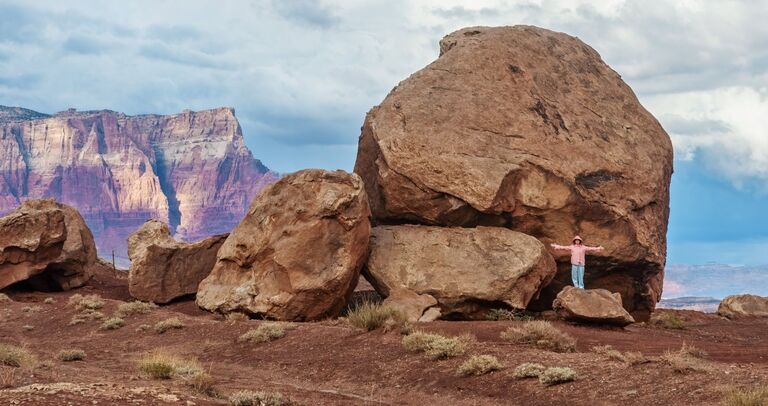After A Cliff Collapsed In The Grand Canyon, Experts Made A Startling Discovery In The Rock
As Allan Krill stood in the shadow of the majestic Grand Canyon, he saw something more eye-catching than the spectacular scenery: a boulder. To the untrained eye, this boulder looked like any other. It had fallen from the cliff face alongside the canyon’s Bright Angel Trail, and the hikers and tourists who’d passed the rock had seemingly thought nothing of it. However, Allan had a sinking feeling that something wasn’t quite right — and so he snapped a picture. And it’s a good thing he did, because soon enough, experts would be battering down his door...
A Geologist's Eye
As Allan looked at the boulder, the geologist began to suspect that he had stumbled onto a remarkable find. He was right, too. Etched onto the stone was something amazing: a relic from before the dinosaurs walked the Earth. For someone in Krill’s line of work, he had hit the jackpot.
Ancient Secrets
Now, Krill’s discovery has been acknowledged as a one-of-a-kind ancient specimen. Even better, it shines a light on the distant past. But had the rocks surrounding the Bright Angel Trail not crumbled – and had a geologist not just happened to have been walking by – this secret may well have remained hidden for generations to come.
Dating Back Two Billion Years
Mind you, the Grand Canyon has been telling stories long before Krill was even born. Its history dates back nearly two billion years to a time when the world looked very different from how it does today. Slowly, though, the supercontinents shifted, and the landscape of what is now Arizona began to emerge. Krill’s special boulder may have appeared at that time, too.
The Ravine Takes Shape
In the region that would become the Grand Canyon, compressive forces and soaring temperatures caused metamorphic and igneous rocks to form. Later, sedimentary layers were laid down – each capturing a moment in the region’s history that can still be read by modern geologists. It wasn’t until towards the end of the Cretaceous Period that the ravine really began to take shape, however.

